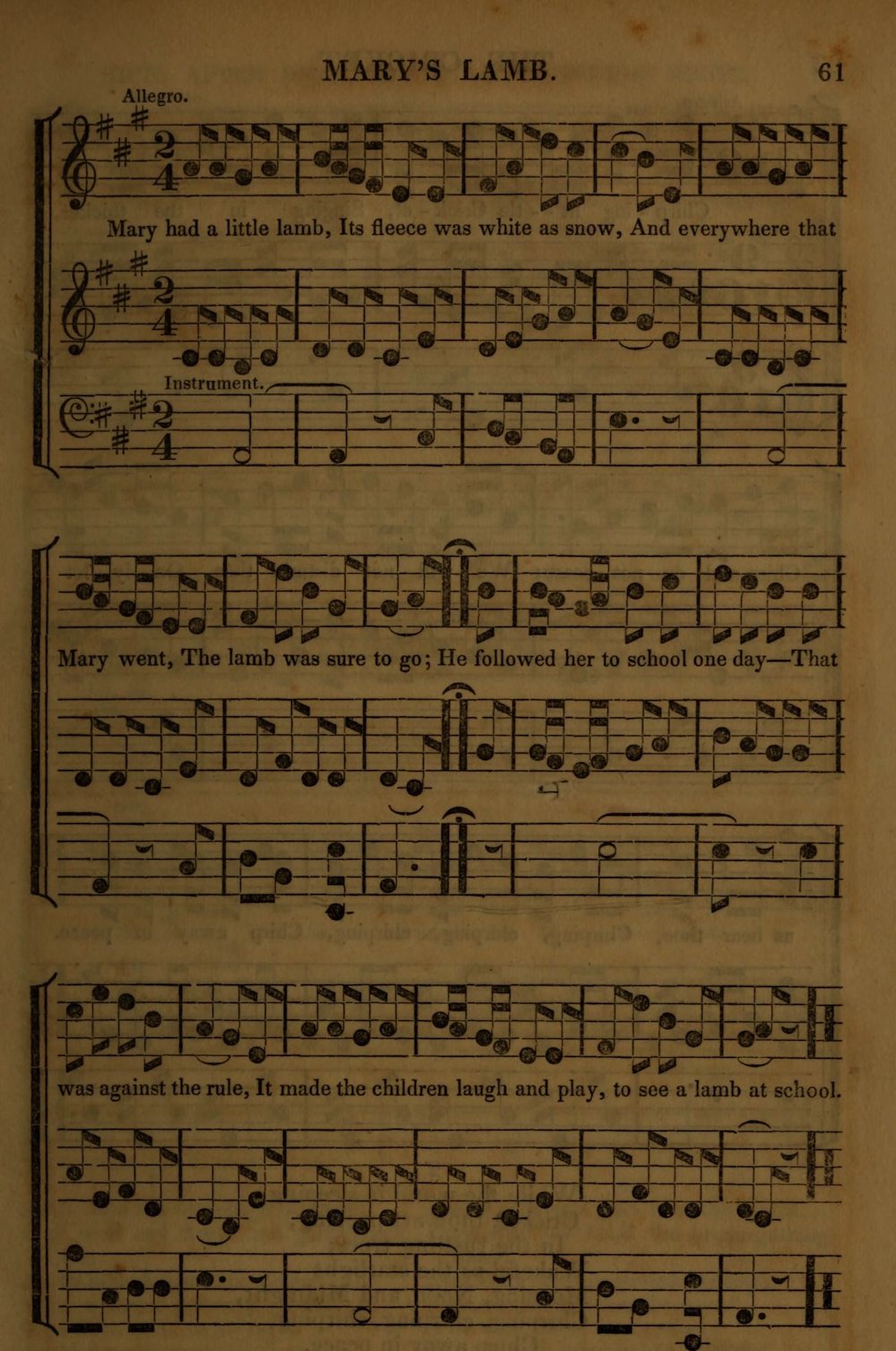First posted on October 11, 2018.
"Mary Had a Little Lamb" is one of the first songs many English-speaking kids learn. The canonicity of the nursery rhyme is suggested by Thomas Edison's recitation of it on his first phonograph recording in 1877. It's the first "real" song many of us learned to play in music lessons.
The poem was published by Sarah Josepha Hale as part of a collection of children's verses in 1830. She had been encouraged to produce this volume by Lowell Mason, who led the founding of school music education in the United States. He was in search of material he could set to music for instruction, and he included "Mary's Lamb" in his Juvenile Lyre, Or, Hymns and Songs, Religious, Moral, and Cheerful, Set to Appropriate Music, For the Use of Primary and Common Schools. This songbook was used in Boston public schools and was probably the first such collection in the United States. Hale's verse is reportedly based on the true story of Massachusetts girl Mary Sawyer, who took her lamb to school and in whose honor the city of Sterling Massachusetts has erected a statue.
 |
| "Mary's Lamb," with music by Lowell Mason from the Juvenile Lyre, 1831, |
References
Boston Literary History
Pound, Gomer. "Mason's Hand in "Mary's Lamb"." The Bulletin of Historical Research in Music Education 7, no. 1 (1986): 23-27. http://www.jstor.org.proxy.libraries.rutgers.edu/stable/40214696.
Richards Free Library


